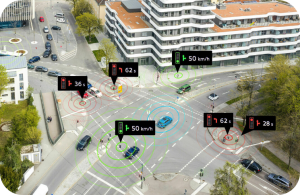
How Opticom TSP Helped MATA Cut Bus Travel Times by Up to 20%
Explore how Miovision Opticom Transit Signal Priority (TSP) helped Memphis move smarter, optimizing bus routes, improving reliability, and enhancing rider experience across the city’s busiest corridors.
Download the Case StudyWhen Memphis Buses Stalled, So Did the City
Every year, nearly 11 million trips are taken on Memphis Area Transit Authority (MATA) services — and two major bus corridors were holding the entire system back.
Poplar Avenue and Elvis Presley Boulevard, the city’s busiest transit routes, had become sources of constant delays and rider frustration. Buses idled in traffic. Riders missed work. Fuel costs rose. The system couldn’t keep up.
Opticom TSP: A Smarter Way to Keep Transit Moving
MATA didn’t need more buses or new roads — they needed smarter traffic signals that could work in real time, without disrupting normal flow.
Opticom Transit Signal Priority (TSP) delivered just that.
“The ability to extend or truncate traffic signals reduces the time spent waiting at red lights unnecessarily and improves our ability to serve the greater Memphis community. So why not use a similar approach for our buses? We could reduce transit delays without compromising everyday traffic flow.”
John Lancaster
Manager of Planning, Memphis Area Transit Authority
Get the Full Story — Download the Case Study
What MATA did next transformed the rider experience — and offered a blueprint for how other cities can rethink public transit without breaking the budget.
Unlock the case study to learn how Memphis:
- Used federal funding to fuel smarter transit corridors
- Built the foundation for future-ready Bus Rapid Transit
- Created operational savings and service improvements
- Equipped their teams to monitor performance remotely, in real time
👉 Enter your email to access the full case study now.



